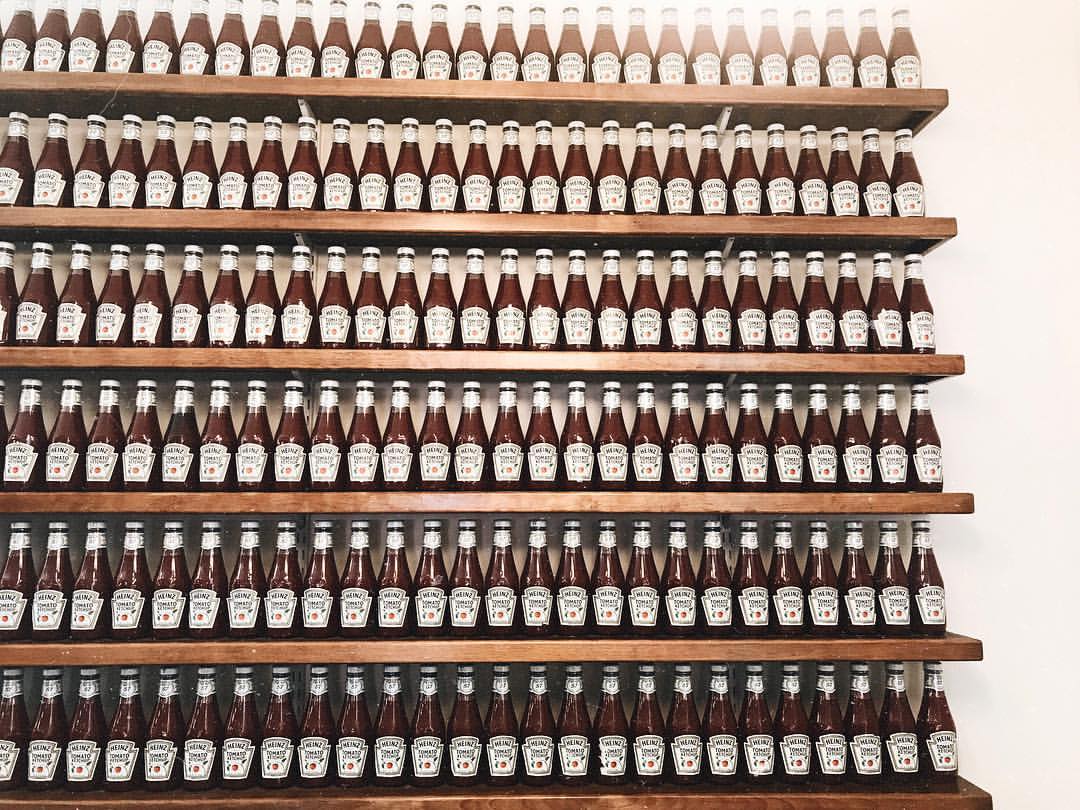Heinz Tomato Ketchup
SANTA BARBARA, CA - MARCH 15: Heinz tomato ketchup is turned into a wall display
at the Farmer Boy restaurant on March 15, 2017, in Santa Barbara, California.
In a gettyimages article entitled: Exploring Santa Barbara Countys Wine Country,
Farmer Boy was highlighted for its creativity in taking a familiar, everyday object from
our consumer culture and creating a work of art.
The long history of ketchup in the Western world actually extends back to the early 16th
century, when British settlers in Fuji were introduced to a sauce used by Chinese sailors
called ke-tchup. Local recipes for ke-tchup varied, but the first recipe on record dates
back to 544 A.D. and instructs any prospective condiment maker to “take the intestine,
stomach, and bladder of the yellow fish, shark and mullet, and wash them well. Mix
them with a moderate amount of salt and place them in a jar. Seal tightly and incubate
in the sun. It will be ready in twenty days in summer, fifty days in spring or fall and a
hundred days in winter.”
By the time the British discovered ke-tchup, the recipe had been simplified into a
pungent, amber-colored liquid made out of salted and fermented anchovies. In a very
real way, the original ketchup wasn’t ketchup at all. It was fish sauce, pretty much
identical to the fish sauce you can buy by the bottle in any Asian supermarket.
When British traders headed back to England with a taste for the sauce, they attempted
to recreate it, anglicizing it with the addition of (what else?) beer. Eventually, anchovies
were taken out of the sauce entirely and replaced with walnut or mushroom ketchup
(which tastes similar to Worcestershire sauce). While the English went on to experiment
with every conceivable variation, they continued to enjoy ketchup for close to 200 years
before anyone thought of chucking a tomato in the mix!
It is no accident, however, that the iconic bottle of Heinz is see-through; it’s a design
statement: purity through transparency. And while each bottle of Heinz ketchup
somewhat mysteriously brags about the company’s “57 Varieties” in a small label
wrapped around the neck...the fact that there are actually 57 varieties of Heinz products
has literally never been true.
Inspired by an advertisement he saw on a train for a company that made “21 varieties”
of shoes, Heinz combined his favorite number 5 with his wife’s favorite number 7, to
brag about his company’s own breadth of products. So “57 Varieties” has literally always
been just playful nonsense.
None of that matters, however, because a bottle of Heinz is not just a container of
ketchup. It is a design classic!
